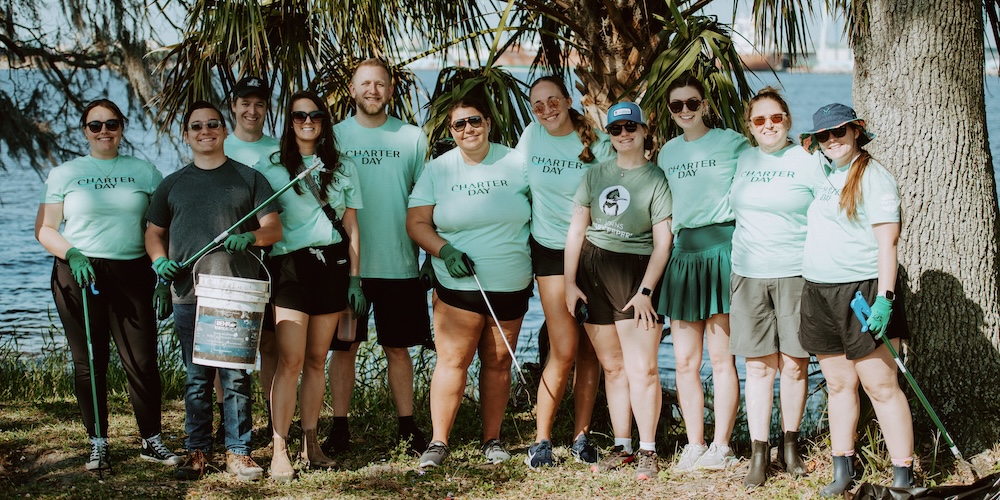Perhaps one of the last commercially important species that is still harvested from the St. Johns River is the blue crab. According to the St Johns River Report, over 1.2 million pounds valued at $3.1 million of both hard- and soft- shell crabs were taken in 2022. Duval County accounted for just over 500,000 pounds worth $1.3 million. The extent of the crabbing effort is seen by anyone boating on the river. There are countless crab traps tethered to originally multi-colored floats which over time, become dark with growth and often difficult to see.
Blue crabs happen to be one of my favorite animals. Partly because I grew up crabbing with fish heads and a dip net on the Chesapeake Bay in Virginia, and along the Outer Banks of North Carolina. Partly because I love to eat crab meat in any form: crabcakes, she-crab soup, or just picking steamed crabs with Old Bay as my go-to seasoning. But mostly because the neurophysiology of the swimming leg musculature was the topic of my master’s thesis research. One benefit of doing research on blue crabs, any specimens not subject to dissection and experimentation could be eaten.
The scientific name of the blue crab is Callinectes sapidus. Callinectes means beautiful swimmer, while sapidus means tasty or savory. They truly are tasty, beautiful swimmers. Crabs are Decapods and have 10 legs. The first pair of legs are modified into claws with one sharp and pincher-like, while the other is stronger and more crusher-like. The middle three sets of legs are walking legs that can propel the critter across the bottom. The beauty is in the last pair of legs which are paddle-like and allow the crab to swim. The leading leg sort of sculls to lift the animal up while the rear leg sweeps back and forth to push the crabs forward.
The life cycle of the blue crabs is amazingly complex. They are crustaceans that have a hard shell of a body, so in order to grow, they must molt, or shed their old shell, enlarge themselves and allow their new shell to harden. Females, whose underside apron or abdomen looks like the US Capitol’s rotunda, give off a chemical scent as they prepare to molt. Males, whose abdomen looks like the Washington Monument, can sense the expectant female molt and will pick up the pre-molting female and carry her around until she molts.
Immature female crabs have a triangular apron on their abdomen. Females only shed once before they mate. After mating, female crabs move into higher salinity waters in order to release their larval crabs.
After about two months, the she-crab apron becomes distended with a large, yellow/orange sponge mass containing 1 to 3 million eggs. Only a few of those eggs will become an adult with a life expectancy of 2 to 4 years. Female crabs carry the eggs for about two weeks before hatching or releasing the zoea. The orange mass becomes darker as the larvae develop. Eggs hatch into microscopic zoea larvae and are flushed out of the river into the Atlantic where they float freely as zooplankton. Zoea transform into megalopa after about 40 days and a dozen or so molts depending on water temperature and food availability.
The zoea and megalopa are transported back into the estuary in an very elegant manner
with up-and-down swimming in the water column. They swim up on the incoming tide and
down to the bottom on the outgoing tide. So they sort of seesaw back into the river
where over the next 12 to 18 months they grow and mature. Only to start the cycle
all over again.
Glad you asked River Life
Can you recommend a few good books that might be fun reads for the summer?
If you want to learn more about the St. Johns River, then read River of Lakes: A Journey on Florida's St. Johns River by Bill Belleville. Then there is a must read for anyone living in Florida in the historical fiction novel A Land Remembered by Patrick Smith. While fiction, there is a lot of historical truth in the story. And a favorite of mine about crabs is Beautiful Swimmers: Watermen, Crabs and the Chesapeake Bay by William Warner. It is a well written and illustrated book about blue crabs in the Chesapeake Bay that also applies to northeast Florida.



